 Hemingway's lament for the downtrodden working class is supposed to be his worst novel. But is it really? 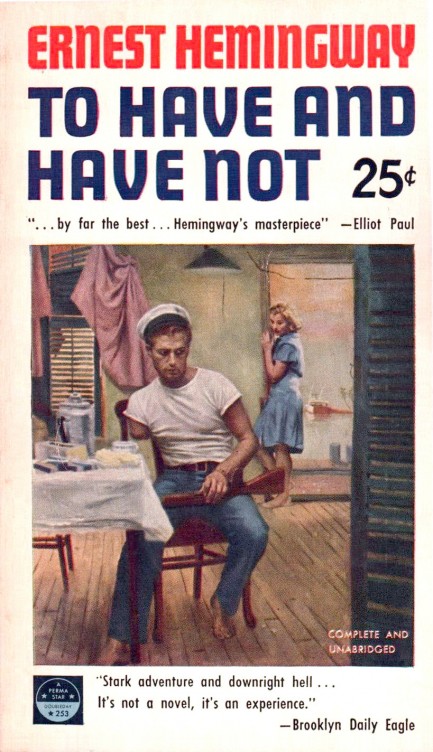
Don't let the cover blurbs fool you. In general To Have and Have Not is considered by critics to be Ernest Hemingway's worst novel. Originally published in 1937, it was completely rewritten and became a great 1944 movie with Humphrey Bogart and Lauren Bacall. If you've already seen the movie but never read the book, hold onto your hats, because this is extraordinarily rough stuff from Hemingway, a tale of desperation and murder in the depths of the Great Depression. Harry Morgan is a Key West boat captain who's stiffed for $825 after his three-week charter skips town. That would be about $15,000 in today's money, so it's no surprise that losing this bundle means Morgan, who's married, has three kids, the usual assortment of bills and responsibilities, and has spent his life fighting to get ahead, is now destitute.
If you opt to read the book, make sure not to gloss over exactly how far in the hole Morgan is. $825 dollars would bend the morals of most people in 1937, just as $15,000 would today. After being cheated out of this cash he makes a fateful decision to turn criminal himself by running illegals from Cuba to Florida. That's when things go from bad to worse. If you look closely at the cover art on this Perma Books edition from 1953 you'll see what the result of Morgan's criminal foray was. That's one reason cover art is so interesting. The scene the artist chooses to depict—in this case it's Tom Dunn—can sometimes be so specific as to give away an important plot point. If you can't tell what we're talking about by looking at the art we'll give you a hint. What happens to Morgan is the also title of an earlier Hemingway book.
But moving on, To Have and Have Not is—we'll just come out and say it—brutally racist. There are some who would like to gaslight you into thinking you're seeing something that isn't there, and others who would prefer you to ignore this, but you shouldn't, because racism is actually pivotal in the narrative. Morgan's initial foray into crime is against people he clearly feels are subhuman. They and other ethnic groups are referred to with slurs, and these come not just from Morgan's mouth, and from his thoughts, but from the writer's thoughts too. There are places where Morgan uses actual names to refer to characters that Hemingway still refers to by slurs. Think: “Hey Joe, give me a hand with these poles,” said Harry. The [slur] put down his coffee and helped Harry with the poles. So while it's always good to separate the author from their fiction so they have freedom to create any sort of characters they wish, it still raises an eyebrow when you read something like that.
Another aspect of To Have and Have Not that may jar is its lack of sympathetic characters. Morgan's ex-prostitute wife Marie is probably the nicest person in the book, and even she drops n-bombs all over place. But you have to root for someone, so it's her and Harry. You do it because they're at the economic mercy of terrible people. Most of these folks—who are generally of a better class—wouldn't use racial slurs, but they also wouldn't think twice about ruining someone for a few dollars. And while Harry employs a black man and gets along with him fine, you can be sure none of his rich charters would let a black man deign to speak to them. So in its way, To Have and Have Not is relevant in 2020 by starring a working class character who's uncouth, uneducated, and devoid of genuine empathy, but who constantly deals with people that think they're better than him and really aren't.
This is why losing the charter and those $825 bucks is such a clever way to open the novel. The charter, Johnson, flies away and doubtless never gives what he did much thought, but in shafting a working man creates wreckage that crushes not just the man he cheated, but those around him. We think this is the way to focus on the book if you read it—acknowledge the obvious deficiencies of Harry Morgan, but pay close attention to the secondary characters. This is what Hemingway wanted, which is why Morgan's narration lasts for only a while. Everything after his first crime caper is told from outside his point of view. As the book goes on, Hemingway drags you deeper into the lives of these ancillary characters, dispassionately leaving a struggling Morgan to recede into the distance.
So is To Have and Have Not Hemingway's worst book? We don't like it as much as his other works, but with its changes in point-of-view, mood, and even narrative tense, it's also more challenging than those books. Ultimately, the most serious indictment of To Have and Have Not comes from the author himself—he thought it was his worst book too. And who are we argue with Ernest Hemingway? But on the other hand, when you write The Sun Also Rises and For Whom the Bell Tolls, and win a Pulitzer Prize for The Old Man and the Sea, and later win a Nobel Prize for your body of work, your worst book can still be pretty good.
 Once upon a time there was nobody hotter than Hemingway. 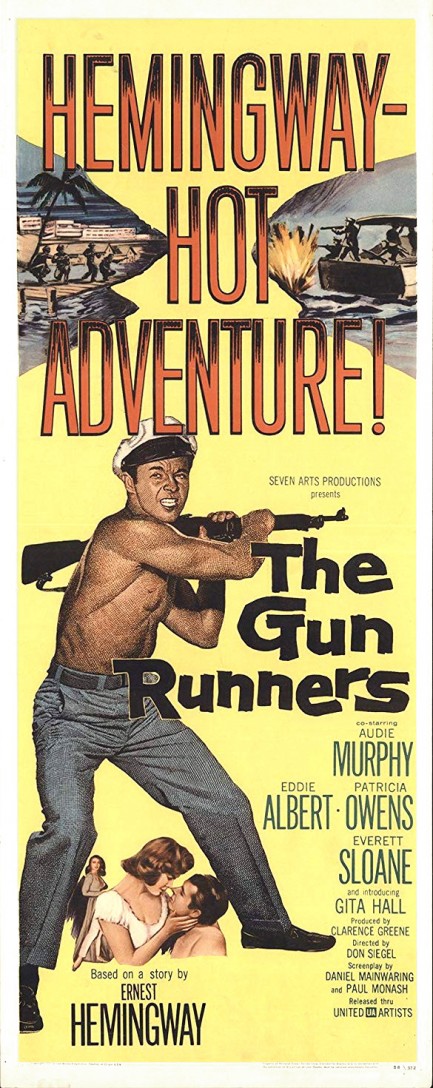
We'd heard that The Gun Runners, which premiered in Britain today in 1958, is the most faithful of the several film adaptations of Ernest Hemingway's novel To Have and Have Not. It isn't that close, actually, but it's Hemingway-hot! according to the promo poster. If we're catching the subtle inference correctly, that must mean it's good. Maybe, but what it really shows is Hemingway was so famous at this time that his mere name was a selling point. Think—how many novelists' names have you seen above the title on a movie poster in recent years? Stephen King comes to mind. Maybe Clive Barker, for a minute there. Michael Crichton? Possibly. After those three we draw a blank.
Well, we like Hemingway, and we love the Bogart/Bacall adaptation of To Have and Have Not, though it has nothing to do with the book. This Hemingway-hot! version stars Audie Murphy—yes, that one, and he's a solid enough actor—as a boat captain working out of Key West who gets ensnared in a dangerous scheme that involves smuggling weapons to Cuba. Eddie Albert as the heavy is as amoral as they come, and in supporting roles you get Patricia Owens, Gita Hall, and Everett Sloane. Sometimes the performances in old movies don't feel quite right to modern sensibilities, but you could transplant Albert's performance note for note into a new movie. Acting that stands the test of time that strongly is rare.
Another thing that stands the test of time are the themes explored here. In the novel, the item some people have that others have not is money and the freedom it brings, but in The Gun Runners what people either have or have not would appear to be scruples. It's no surprise that the structural inequality aspect of Hemingway's text was downplayed—who wanted to hear about that in 1958, when so many Americans could work a simple job yet afford a car, a house, and a family? But people sure have a clear understanding of inequality these days, don't they? For that reason alone, we think this flick will resonate with many. We recommend putting this in your queue. In the end it really is Hemingway-hot! 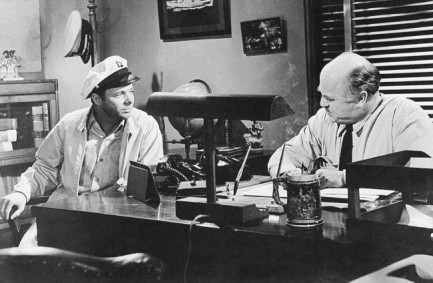 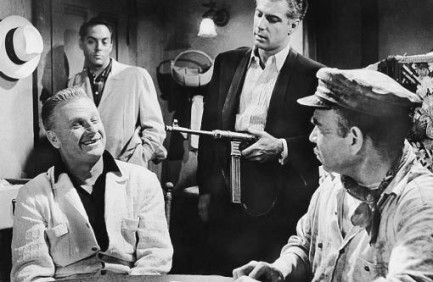 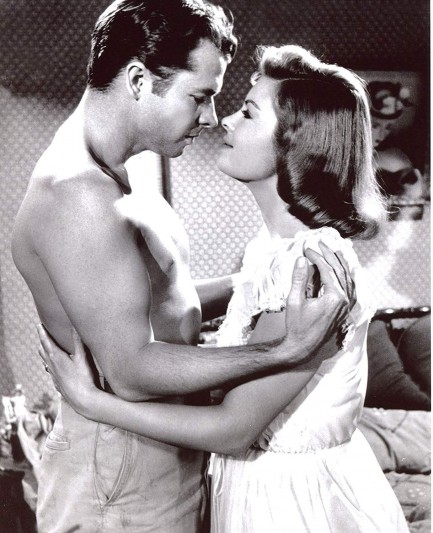 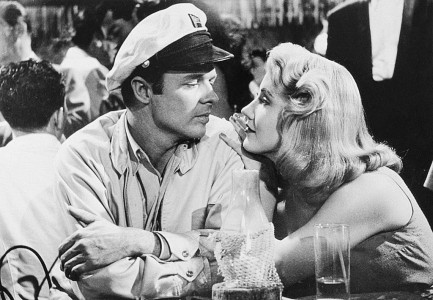  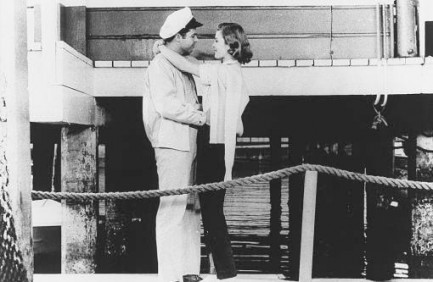 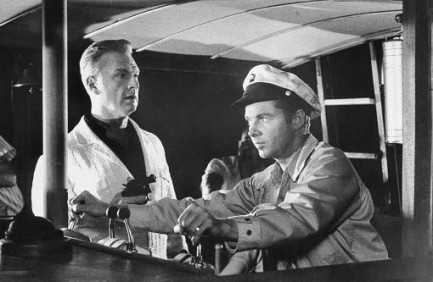 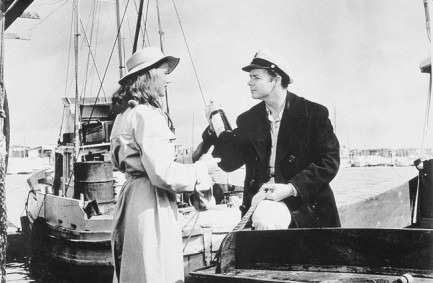 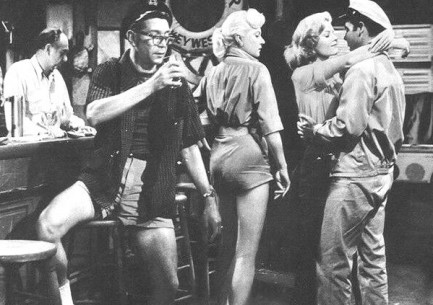 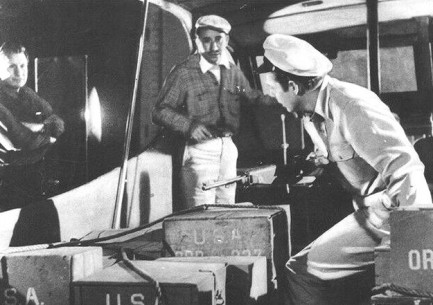 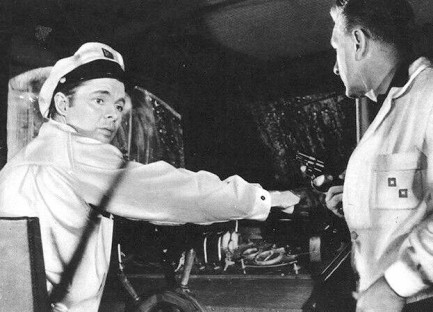 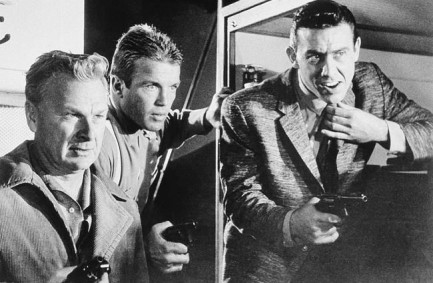 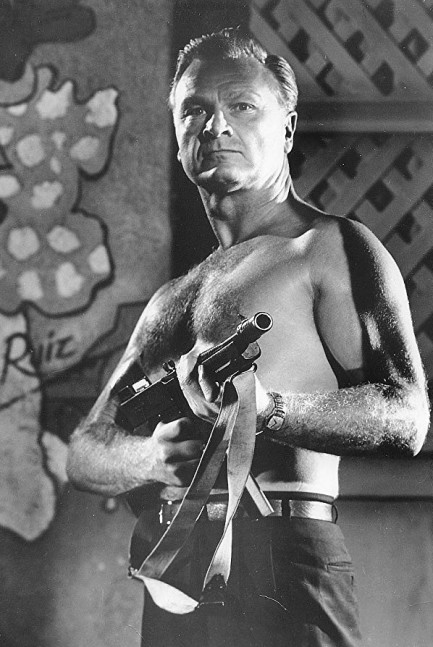 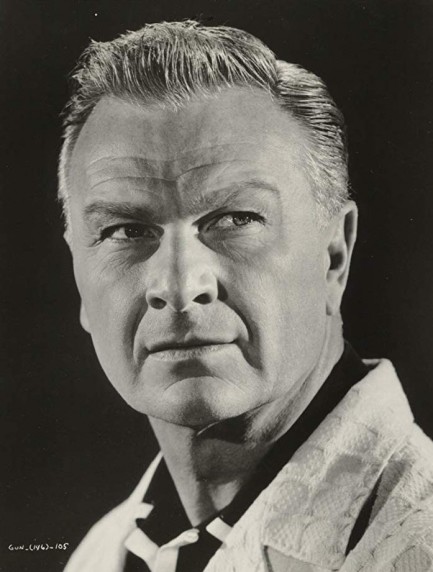
 Florida sleaze in the Florida Keys. 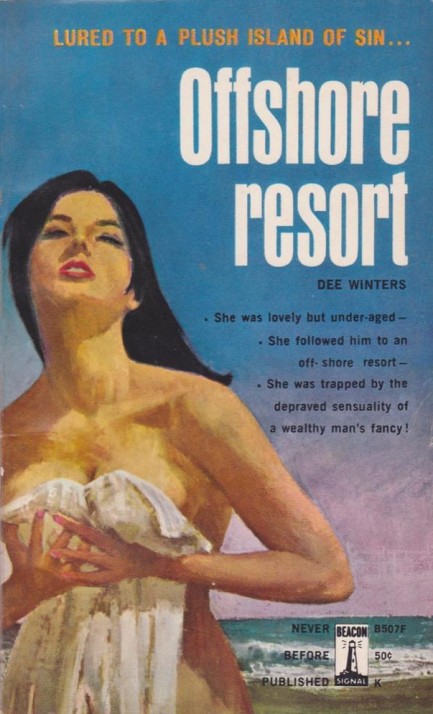
In Offshore Resort, written by Dee Winters and published in 1962, a Key West bartender is enticed into a job on a swanky resort island and finds there's all sorts of sexual mixing and matching going on between its rich denizens, and that he's expected to join the activities as a boy toy. He took the job in the first place to be close to his girlfriend, an unhappily married, idle-rich trophy wife whose husband is a drunken bully. Watching his true love play the perfect wife is hard enough to watch, but the scenario gets more complicated when his neighbor, innocent young Angel, gets a job at the resort too and draws the attentions of the place's worst men. Winters could have gone all sorts of interesting places with this narrative, but reached none of them. Beacon Signal sleaze titles are wildly hit and miss. This one is a miss.
 Flying through the air with the greatest of ease. 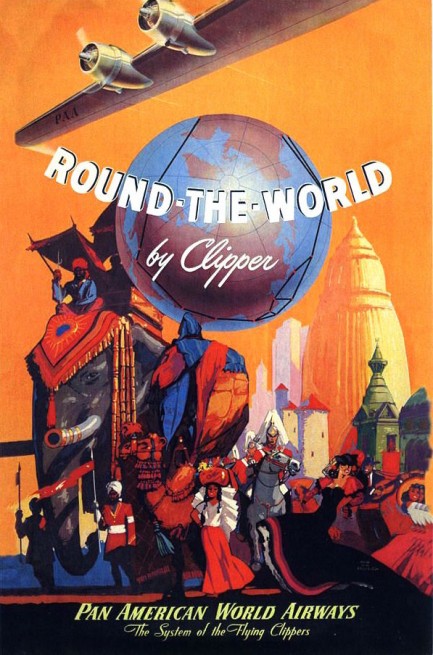
Pan American World Airways knew how to imbue travel with an aura of romance. It launched in the late 1920s with mail service from Key West to Havana, and quickly expanded to become a passenger airline. Business boomed—well heeled Americans took flights to Havana in droves in what became known as the Cocktail Circuit, escaping U.S. prohibition to enjoy a weekend of decadent nightclubs and gambling before returning in time for Monday's real world obligations. Soon Pan Am expanded service throughout Latin America and the world. It bought seaplanes to get around the problem of many cities not having proper airports. With the ability to use docking facilities, virtually no destination was inaccessible. The company dubbed its seaplane fleet “clippers,” evoking the masted sailing ships of the oceangoing era, and their draw was not just their mobility but their luxury. Some say it was a different era of corporate governance, a time when the mandate in the commercial travel industry was to earn loyalty with good service rather than to blackmail customers into avoiding misery. This is partly true, but it's also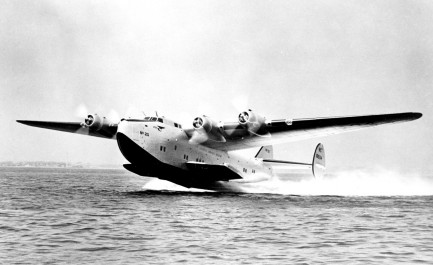 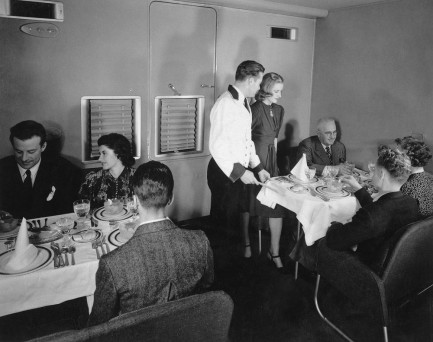 important to remember that air travel was initially considered a luxury indulgence. It was with the advent of travel for the masses that airlines began to exchange services for profitably packing people in like sardines. In that sense, their priorities have not changed much in fifty years. important to remember that air travel was initially considered a luxury indulgence. It was with the advent of travel for the masses that airlines began to exchange services for profitably packing people in like sardines. In that sense, their priorities have not changed much in fifty years.
Pan Am soon began promoting its services with colorful posters, many of which were created by a talented artist named Mark von Arenburg. These prints, which promised to take passengers around the world by clipper, hung mainly in airports and travel agencies and gave passersby fantastic glimpses of faraway destinations—indeed, it's difficult to look at any of them without feeling the pull of the exotic wider world. The company produced hundreds of these promos in various styles and multiple languages, but for our purposes we're interested today only in the posters advertising travel on that elegant Pan Am clipper. Over the years the fleet evolved from seaplanes to jets, and while all were called clippers, it's the lovely skyboats that are most fondly remembered—and which provided so many entertaining settings in old movies and pulp fiction. The posters you see below are scans of both originals and reproductions, and there are quite a few. Even so, it isn't a complete collection. Some of the most famous posters are so rare they simply can't be found online at the moment. While it's true that air travelers are mainly treated like cattle rather than customers today, and commercial flying is a form of voluntary torture, the destinations are still there to make those difficult hours in the air worthwhile. Let these posters inspire you. 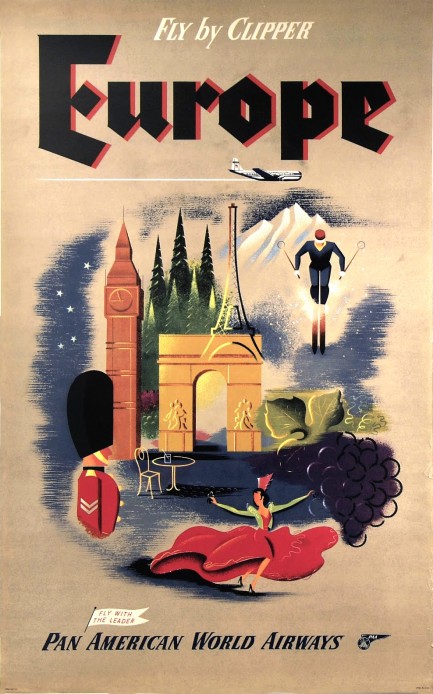 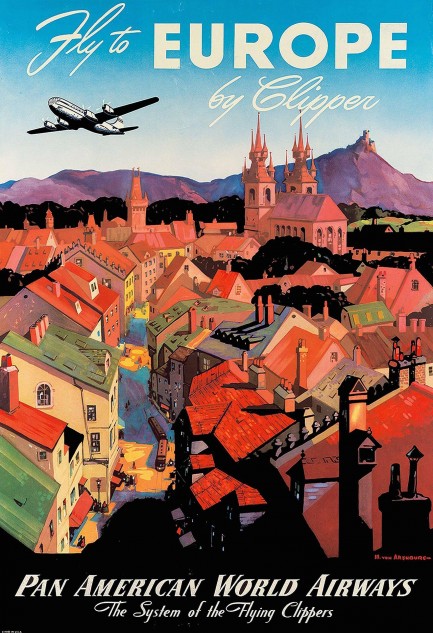 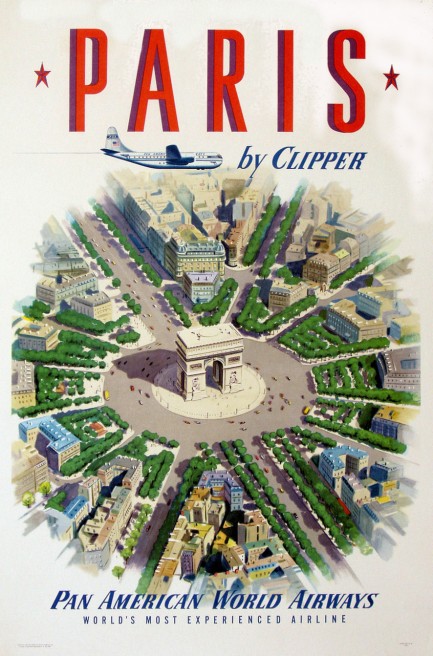 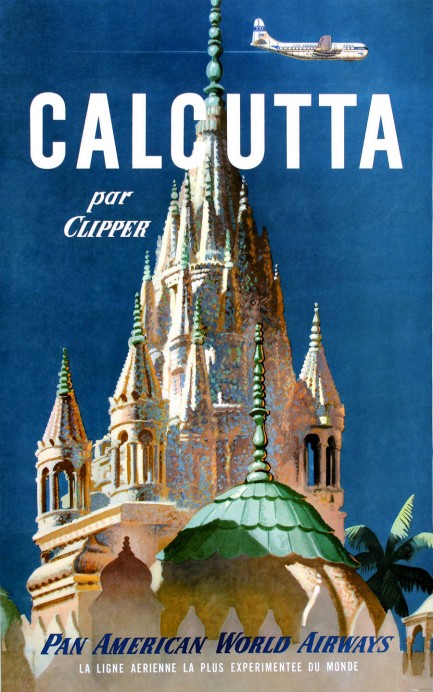 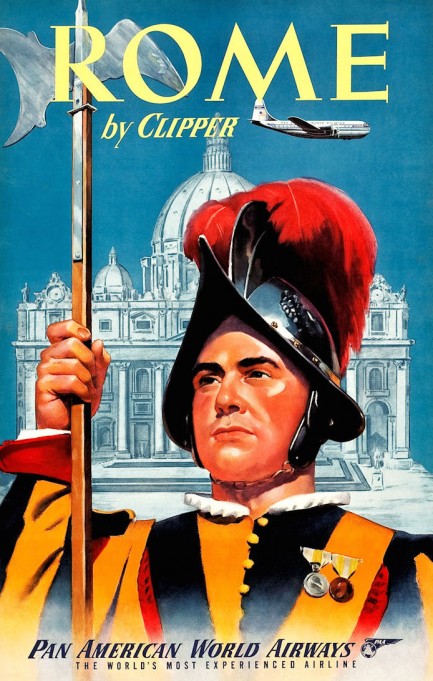 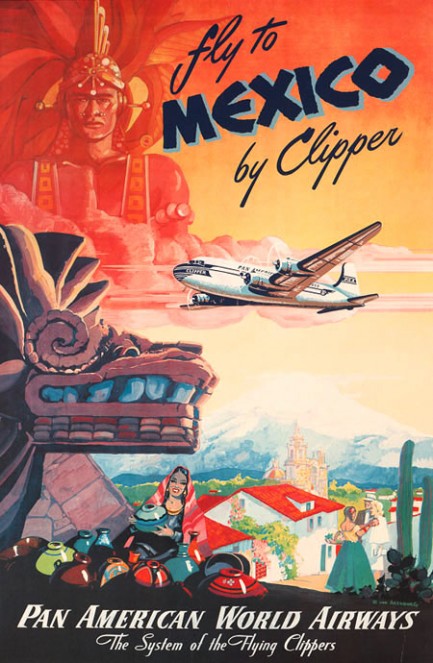 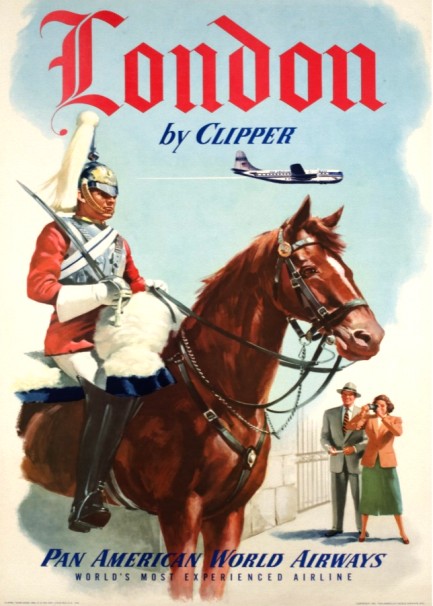 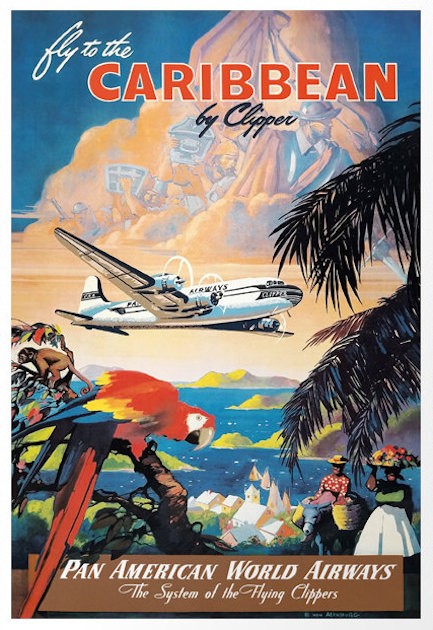 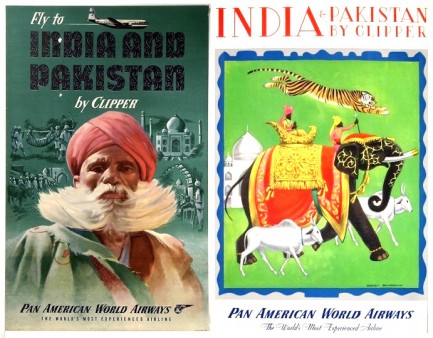 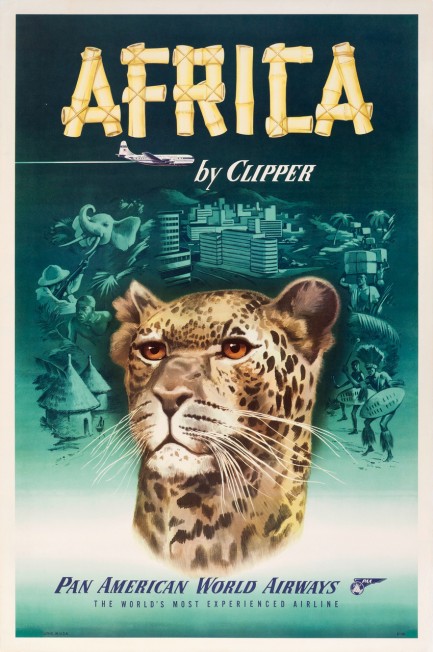 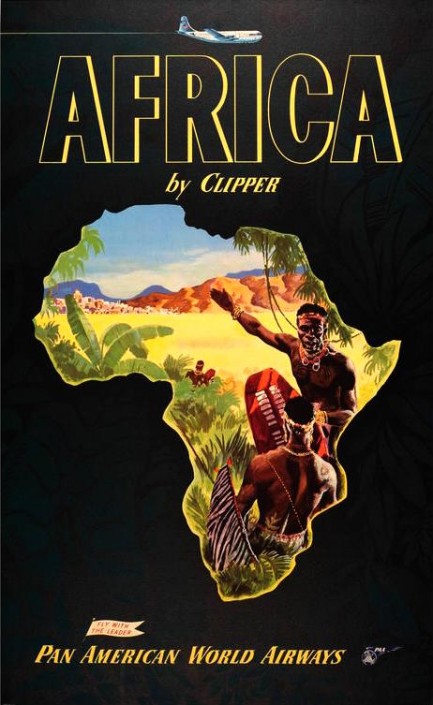 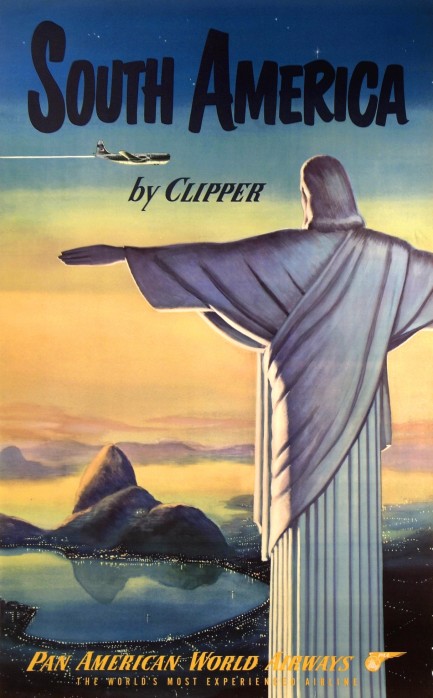 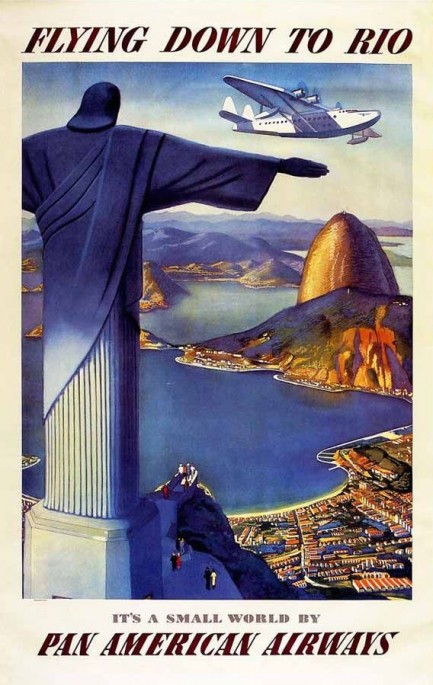 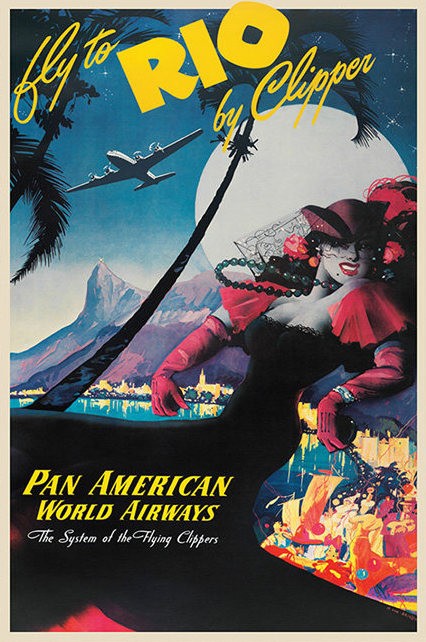 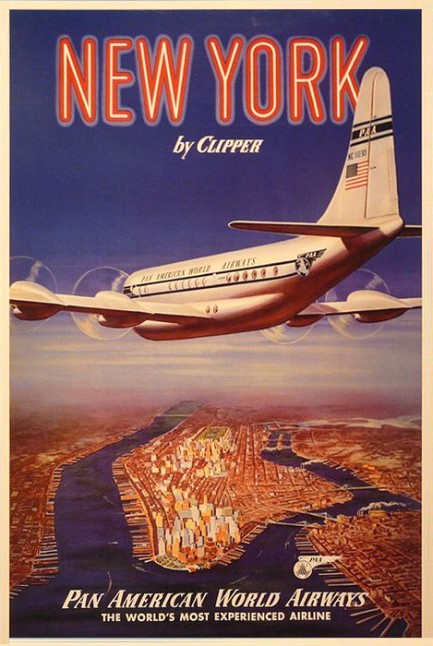 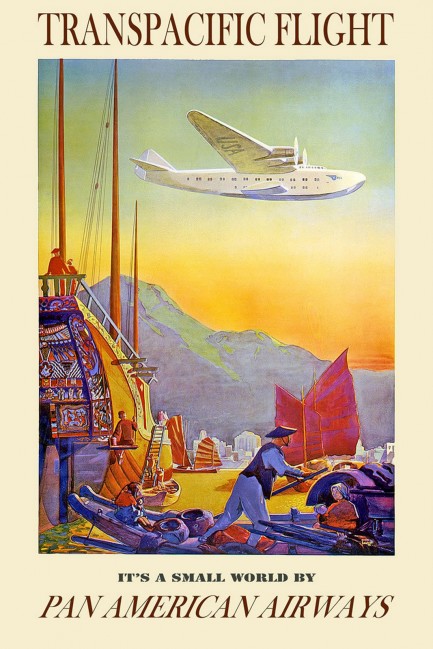  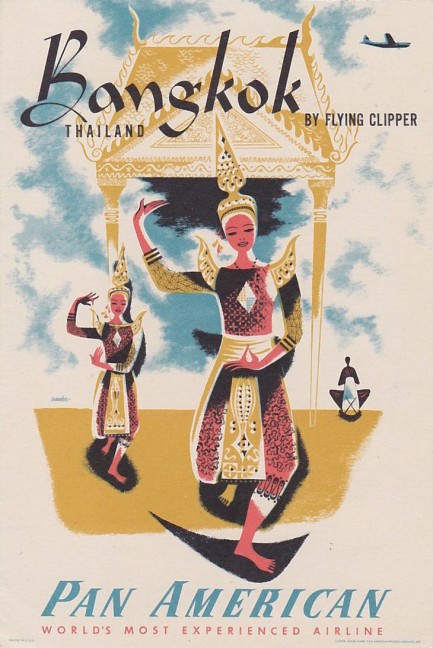 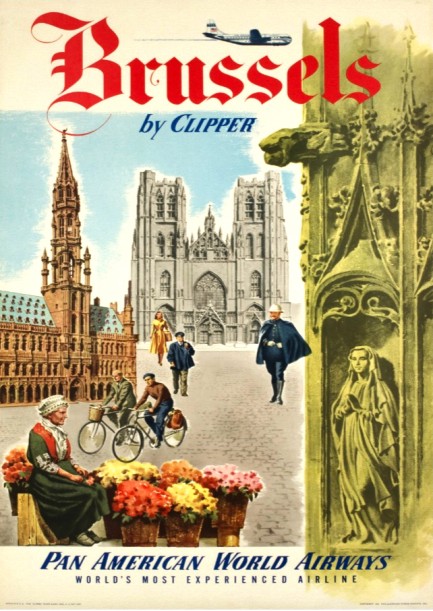 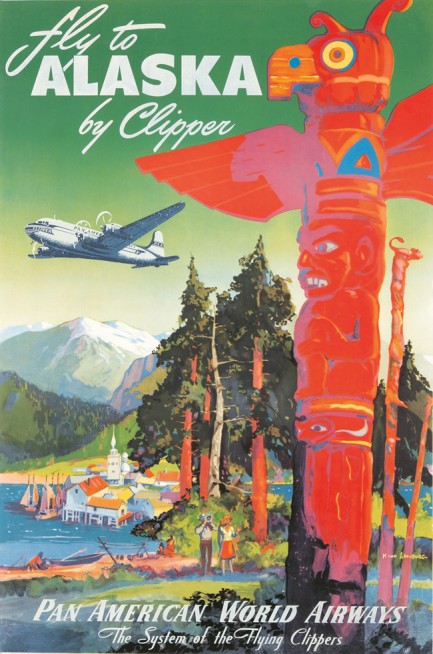 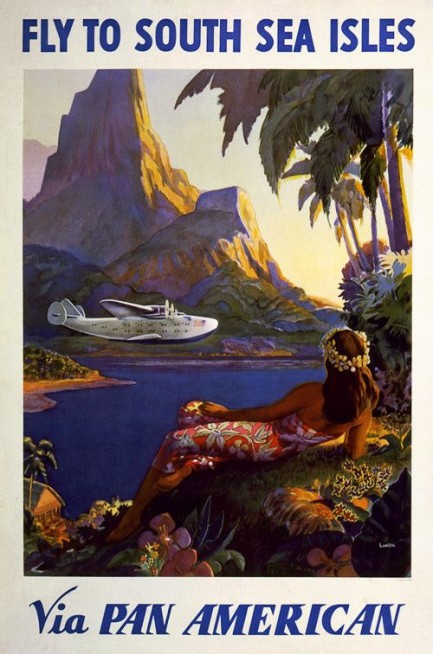 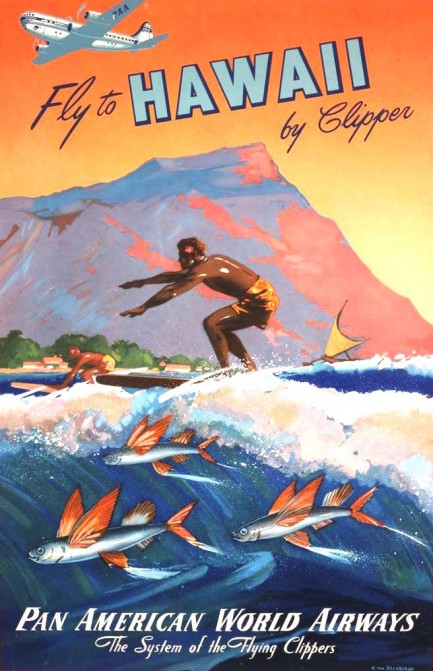 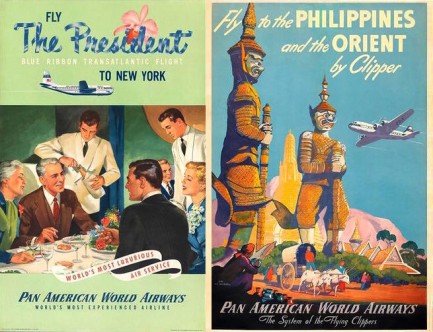 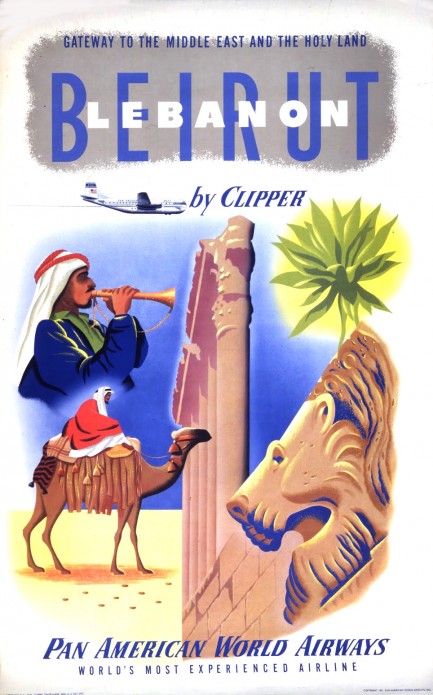 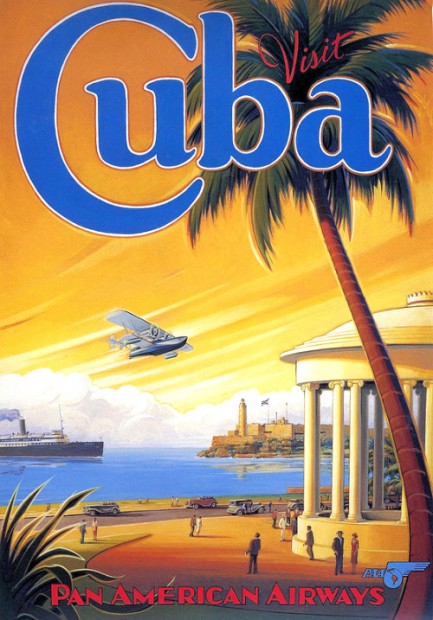 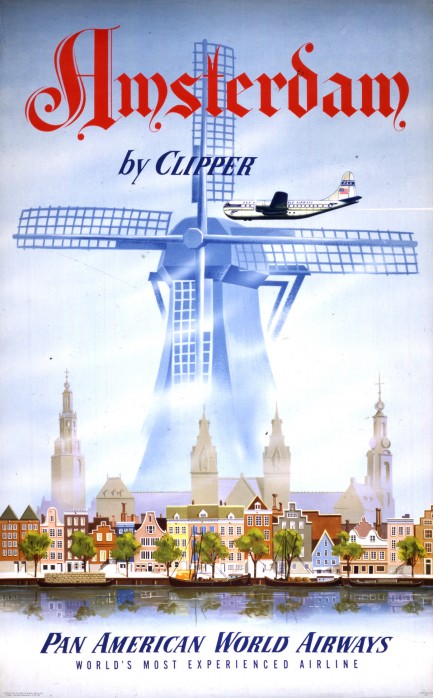 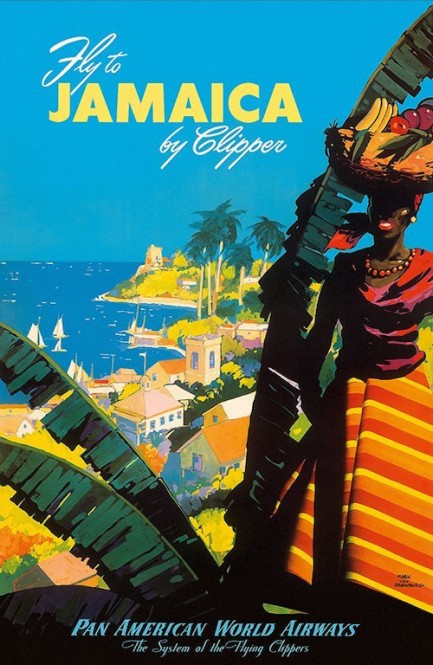 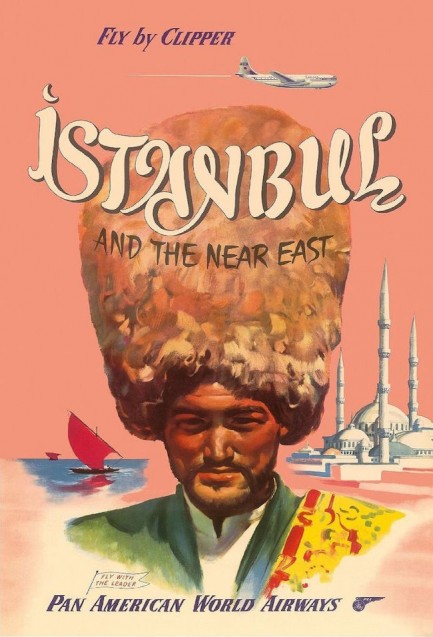 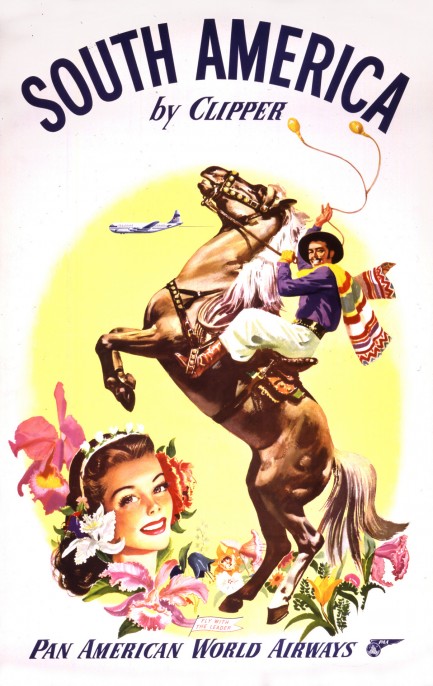 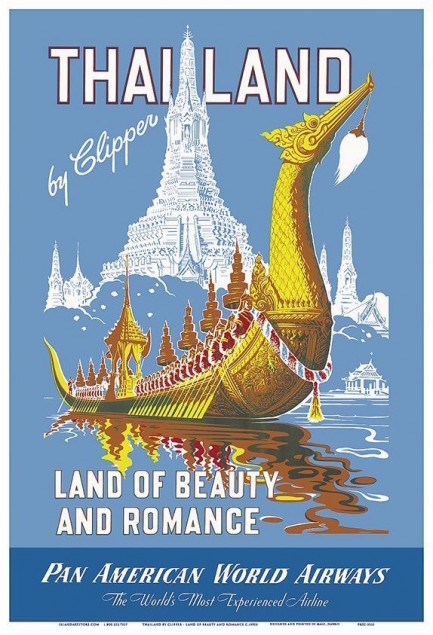 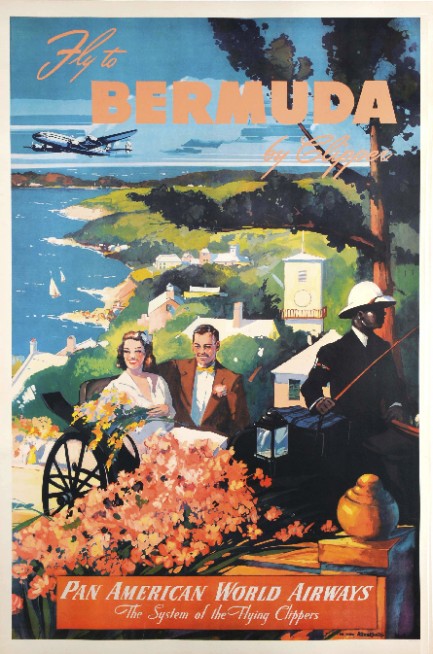 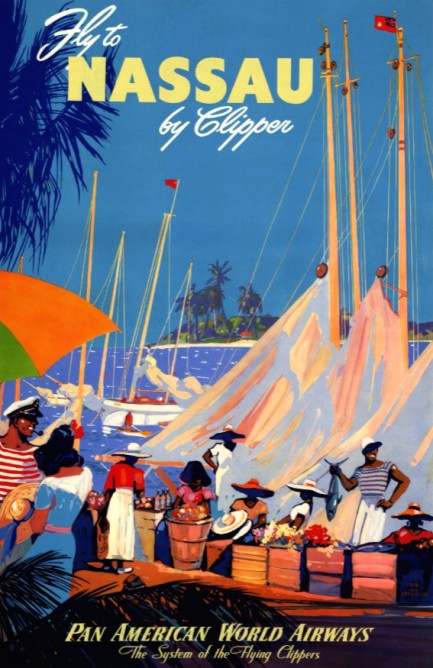 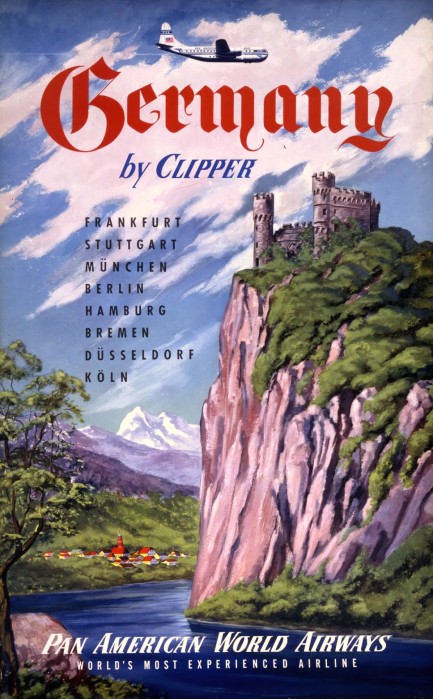 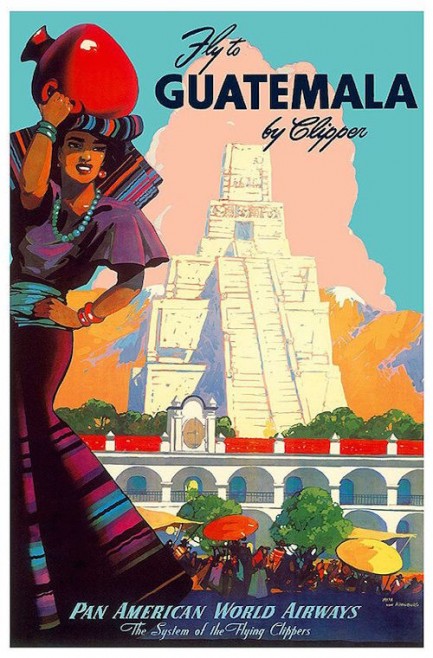 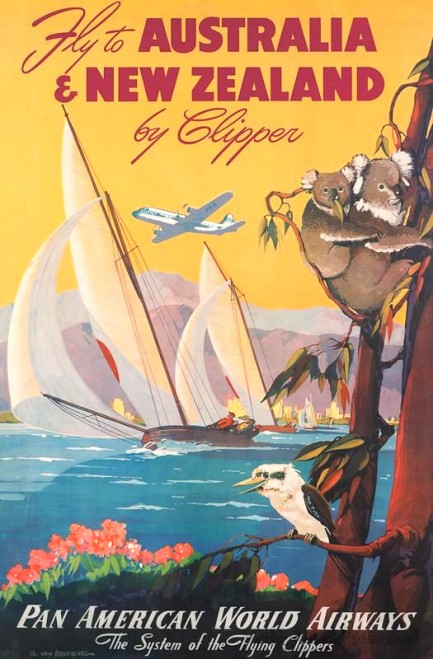 
|
 |

The headlines that mattered yesteryear.
2003—Hope Dies
Film legend Bob Hope dies of pneumonia two months after celebrating his 100th birthday. 1945—Churchill Given the Sack
In spite of admiring Winston Churchill as a great wartime leader, Britons elect
Clement Attlee the nation's new prime minister in a sweeping victory for the Labour Party over the Conservatives. 1952—Evita Peron Dies
Eva Duarte de Peron, aka Evita, wife of the president of the Argentine Republic, dies from cancer at age 33. Evita had brought the working classes into a position of political power never witnessed before, but was hated by the nation's powerful military class. She is lain to rest in Milan, Italy in a secret grave under a nun's name, but is eventually returned to Argentina for reburial beside her husband in 1974. 1943—Mussolini Calls It Quits
Italian dictator Benito Mussolini steps down as head of the armed forces and the government. It soon becomes clear that Il Duce did not relinquish power voluntarily, but was forced to resign after former Fascist colleagues turned against him. He is later installed by Germany as leader of the Italian Social Republic in the north of the country, but is killed by partisans in 1945.
|

|
|

It's easy. We have an uploader that makes it a snap. Use it to submit your art, text, header, and subhead. Your post can be funny, serious, or anything in between, as long as it's vintage pulp. You'll get a byline and experience the fleeting pride of free authorship. We'll edit your post for typos, but the rest is up to you. Click here to give us your best shot.

|
|























 important to remember that air travel was initially considered a luxury indulgence. It was with the advent of travel for the masses that airlines began to exchange services for profitably packing people in like sardines. In that sense, their priorities have not changed much in fifty years.
important to remember that air travel was initially considered a luxury indulgence. It was with the advent of travel for the masses that airlines began to exchange services for profitably packing people in like sardines. In that sense, their priorities have not changed much in fifty years.







































































































